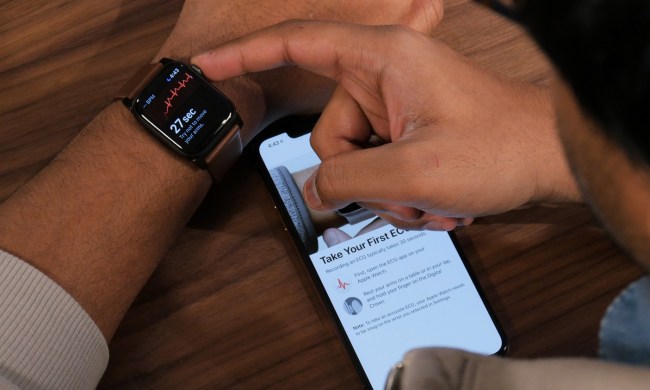Parents rarely seem to be proponents of tattoos, but the next generation of the fashion statement may have them singing a different tune. Now, when you’re justifying your new ink, consider suggesting a “smart tattoo,” the latest trend to emerge in wearables. At this year’s CES, the Massachusetts based MC10 has unveiled two new products — the BioStamp Research Connect and the My UV Patch, created in partnership with L’Oreal. Both utilize MC10’s trademark stretchable and flexible technology, producing a tattoo (or really, a sticker) that will truly move with you.
The BioStamp Research Connect is much like many other wearables currently on the market, but in a much more unique format. Rather than a wrist band or even a piece of jewelry, the BioStamp lives directly on your skin and provides first-hand data to medical researchers. It’s been designed specifically for researchers who are looking into problems with movement, motor skills and other neurodegenerative disorders. Included in the sticker-like design is an accelerometer, a gyroscope, a mini ECG, and the ability to measure the electrical signals produced by skeletal muscles.
And because the BioStamp is so easy to wear and can be placed just about anywhere on the body, MC10 notes that the latest technology will be able to provide doctors and researchers “rich profiles of human activity.”

The second tattoo, the My UV Patch, is the product of a joint effort between MC10 and beauty company L’Oreal, and is meant to draw attention to the potential dangers of too much sun exposure. Stretchy and super thin, the Patch looks a bit like a high-tech bandage, except that it contains photosensitive dyes that change color in the presence of UV rays. To determine just how many rays you’ve caught, just take a picture of the sticker with your smartphone, and the companion app will give you an idea of the potential damage you’ve done.
But don’t worry — it won’t just make you feel bad about your over-consumption of vitamin D — the app will also provide suggestions as to how to keep your skin safe. “Previous technologies could only tell users the amount of potential sun exposure they were receiving per hour while wearing a rigid, non-stretchable device,” said Guive Balooch, global vice president of L’Oréal’s Technology Incubator. “The key was to design a sensor that was thin, comfortable and virtually weightless so people would actually want to wear it. We’re excited to be the first beauty company entering the stretchable electronics field and to explore the many potential applications for this technology within our industry and beyond.”
While both these devices will probably first be made available to researchers, the intrigue surrounding them may soon drive them to the public as well.


